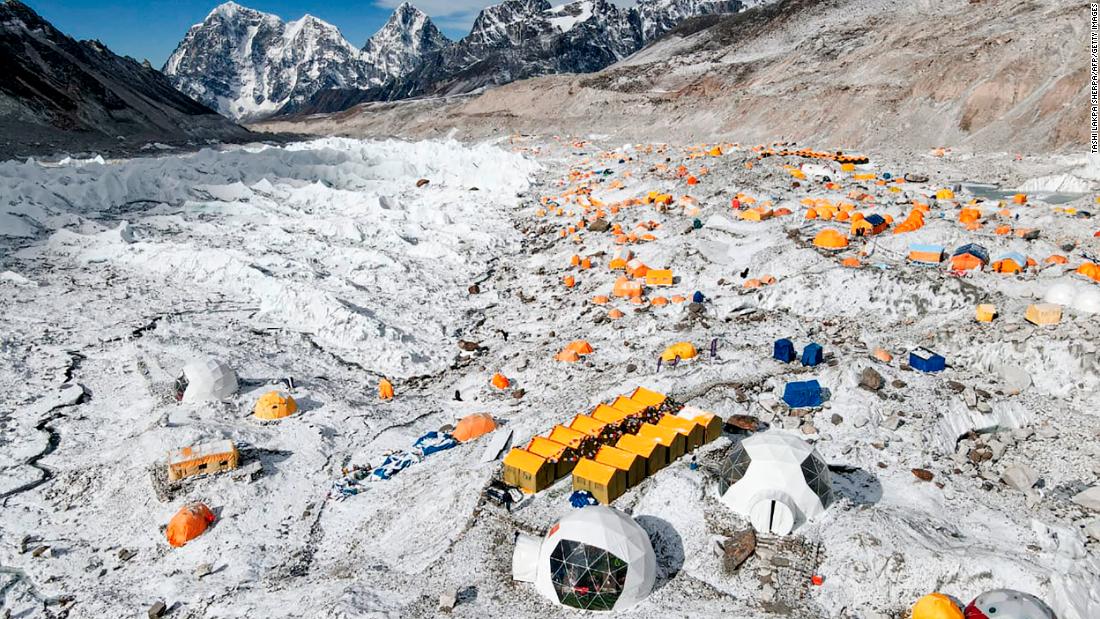(CNN) — Nepal is considering relocating Everest Base Camp due to environmental concerns.
According to Nepal’s Department of Tourism Director-General Taranath Adhikari, Base Camp’s location faces some risk from the melt of nearby Khumbu glacier.
“We have received recommendations from numerous stakeholders to relocate the base camp. While no decisions have been made yet, we are taking these suggestions very seriously,” Adhikari told CNN Travel.
These stakeholders include local residents, mountaineers and environmental experts.
Since research activities can only be conducted during spring, it could take 2-3 years to make a decision. Some studies took place during this year’s spring climbing season, which generally peaks in May.
Once involved parties complete their research, they will likely need to present a proposal to the Nepali government. Nepal’s Cabinet would have the final say on a decision.
Adhikari cited “anthropogenic activities” — otherwise known as human behaviors — and climate change as issues affecting Base Camp. Khumbu glacier is melting at a speed faster than the natural rate.
A joint survey conducted by China and Nepal has resulted in a new, higher elevation for the tallest mountain in the world, Mount Everest.
This is not the first time concerned parties have sounded the alarm about environmental damage at Mount Everest.
Paul Mayewski, the expedition leader and the director of the Climate Change Institute at the University of Maine, told CNN that the findings showed “a complete change from what has been experienced in that area, throughout probably all of the period of occupation by humans in the mountains.”
Climate change is affecting many of the world’s most precious places.
“Nepal alone cannot reduce carbon emissions and global warming impact.” Adhikari said. “However, we can mitigate some matters by doing such kind of temporary measures.”
He added: “On the one hand, we want to preserve the mountain and the glacier. On the other hand, we don’t want to affect the mountain economy.”
Balancing desires to climb Everest with the needs of local communities has been an ongoing challenge in Nepal.
Permits to climb Everest cost $11,000 per person. A portion of that money is earmarked for communities near the mountain.
Mount Everest’s Base Camp is 5,400 meters (17,700 feet) above sea level.
A proposed location for a new Base Camp might be 200 – 300 meters (656 – 984 feet) below the current altitude.
Top image: Camping tents at Everest Base Camp. Credit: TASHI LAKPA SHERPA/AFP/Getty Images
